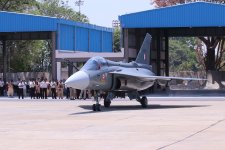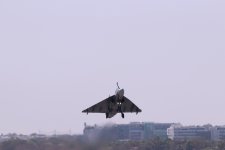For Context:
View attachment 32667
In addition to the plug, ADA studied a bulged canopy to improve area ruling even further. The combined effect was 6 percent lower supersonic drag, which in turn led to a 20 percent improvement in transonic acceleration and 2 percent improvement in maximum speed [4].
View attachment 32668
Similarly, it was observed that there was a sudden kink in the aft bottom of the fuselage in Mk1 as shown in Figure 3. By eliminating this kink and identifying an optimized smoothened aft fuselage, an improvement of 4.9 percent was predicted in the supersonic drag on the aft body region.
View attachment 32669
A substantial amount of effort was directed towards optimizing the air intakes. The impact of changes in lip and cowl geometries, contractions ratio (i.e. the ratio of air intake to the minimum area of the intake duct) and performance of a newly proposed 3-door auxiliary intake were studied. The goal of these studies was to improve pressure recovery at low speeds without adversely impacting spillage drag at high speeds. It was found that the lip geometry and variation in contraction ratio of these features have minor improvements in low speed regimes, but their attendant side effect on high speed performance was deemed to be too high. On the other hand, cowl geometry optimization showed good improvement in pressure recovery due to its positive impact on the local flow field near the inlet plane. The 3-door design further enhances the gains in pressure recovery. It’s also expected to facilitate improved flow rates through the auxiliary intakes during the low speed, high AoA regimes. The combination of optimized cowl geometry and 3-door design results in a 3 percent improvement in pressure recovery, which should lead to an equivalent improvement in engine performance [11]. The 3-door design can already be seen on LCA Navy Mk1 prototypes.

delhidefencereview.com







